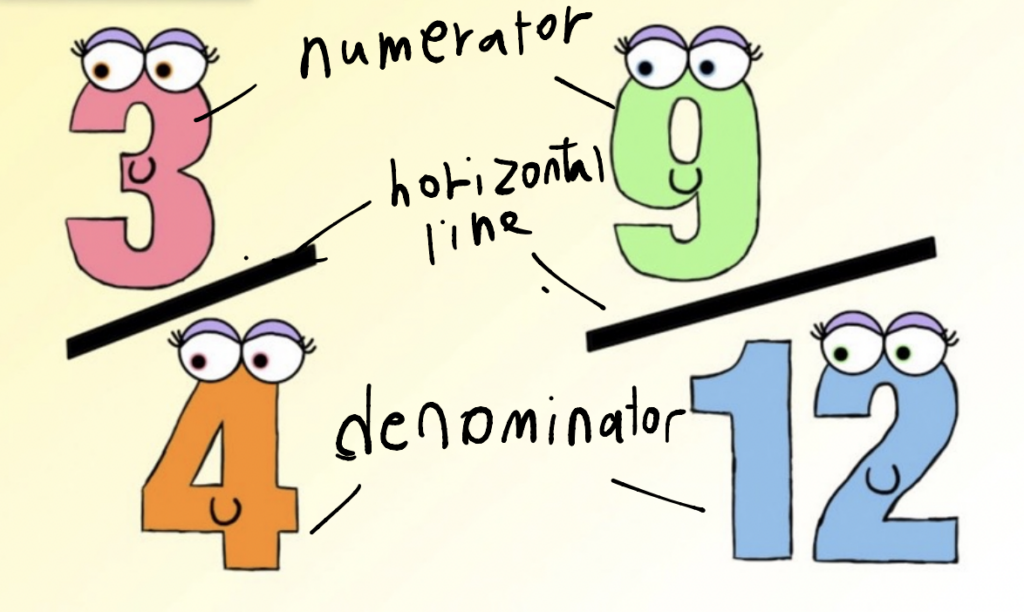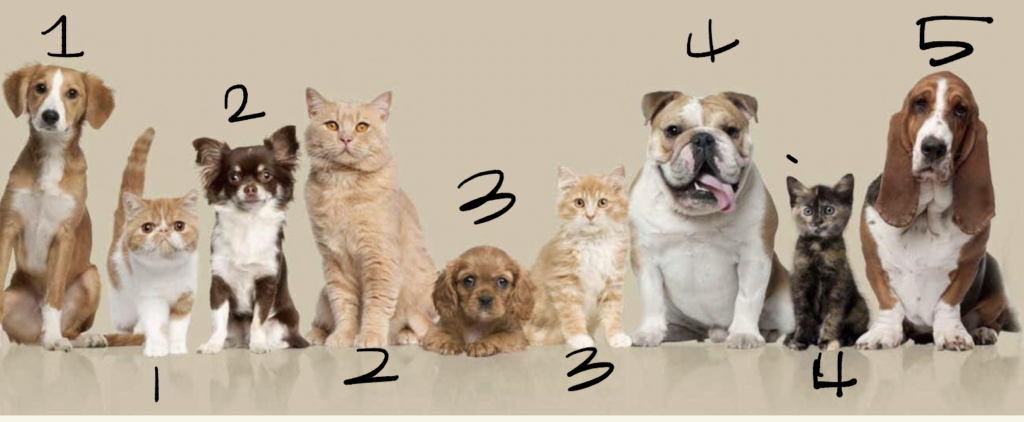SECTION#3: HOW TO READ AND WRITE FRACTIONS
Instructor: HONGSIK KIM
Students: Grade 3.
Age group: 7 – 8 years old
Basic concept of fraction: A fraction is a mathematical representation of a part of a whole. It is written as a ratio of two numbers separated by a horizontal line. The number above the line is called the numerator, and the number below the line is called the denominator.
Let’s start from Writing Fraction!

As a we look at the picture, we need 3 things for fraction. numerator, horizontal line and denominator.

There are 9 animals (4 cats and 5 dogs)
what is denomiator? 9! (4 cats +5dogs)
what is numerator of cats? 4!
what is numerator of dogs? 5!
For example, the fraction cat 4/9 represents 4 parts out of a total of 9 parts. The number 4 is the numerator, and the number 9 is the denominator.
I used one of the Managing Intrinsic Load principle which is segmenting. in the first picture by segmenting fraction in to 3 details . Segmenting is a common strategy used in instructional design to break down complex information or processes into smaller, more manageable pieces. By doing this, students can more easily understand and remember the information, and also have more control over their own learning pace. It’s a great way to help learners build their knowledge and skills step by step, and gradually increase their mastery of a topic.
How to read fractions!

point is reading numerator as a cardinal number, denomiator as a ordinal number.
A Cardinal Number is a number that says how many of something there are, such as one, two, three, four, five.
An Ordinal Number is a number that tells the position of something in a list, such as first second third fourth fifth etc.
Fractions can be used to represent parts of a whole, parts of a set, or parts of a measurement. They are commonly used in everyday situations, such as in cooking, where recipes often call for a certain amount of ingredients in fractions.

Fractions can be added, subtracted, multiplied, and divided just like whole numbers, but with some additional rules. To add or subtract fractions, the denominators must be the same. To multiply fractions, you multiply the numerators and denominators together. To divide fractions, you flip the second fraction and multiply it by the first fraction.This is why there are pre-request knowlege. More information is in annie’s blog
Also I used modality principle, reason for this is that when learners receive information through multiple modalities, they are able to process the information through both their visual and auditory channels, which can help them to better encode and retain the information.
Leave a Reply
You must be logged in to post a comment.